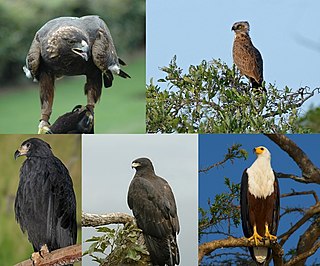
Eagle is the common name for the golden eagle, bald eagle, and other birds of prey in the family of the Accipitridae. Eagles belong to several groups of genera, some of which are closely related. True eagles comprise the genus Aquila. Most of the 68 species of eagles are from Eurasia and Africa. Outside this area, just 14 species can be found—two in North America, nine in Central and South America, and three in Australia.

In taxonomy, binomial nomenclature, also called binary nomenclature, is a formal system of naming species of living things by giving each a name composed of two parts, both of which use Latin grammatical forms, although they can be based on words from other languages. Such a name is called a binomial name, a binomen, binominal name, or a scientific name; more informally it is also historically called a Latin name. In the International Code of Zoological Nomenclature (ICZN), the system is also called binominal nomenclature, with an "n" before the "al" in "binominal", which is not a typographic error, meaning "two-name naming system".
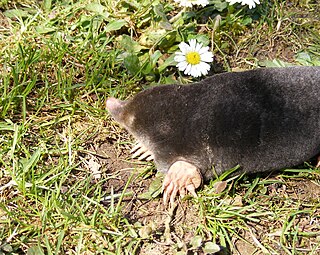
Moles are small mammals adapted to a subterranean lifestyle. They have cylindrical bodies, velvety fur, very small, inconspicuous eyes and ears, reduced hindlimbs, and short, powerful forelimbs with large paws adapted for digging.

Isocrates was an ancient Greek rhetorician, one of the ten Attic orators. Among the most influential Greek rhetoricians of his time, Isocrates made many contributions to rhetoric and education through his teaching and written works.
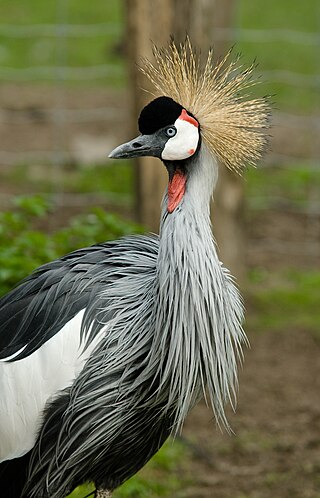
The Gruiformes are an order containing a considerable number of living and extinct bird families, with a widespread geographical diversity. Gruiform means "crane-like".
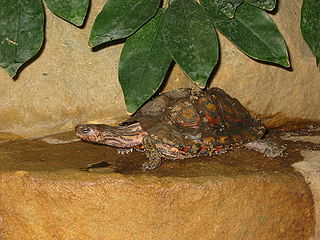
The Geoemydidae are one of the largest and most diverse families in the order Testudines (turtles), with about 70 species. The family includes the Eurasian pond and river turtles and Neotropical wood turtles.

Old World monkeys are primates in the family Cercopithecidae. Twenty-four genera and 138 species are recognized, making it the largest primate family. Old World monkey genera include baboons, red colobus, and macaques. Common names for other Old World monkeys include the talapoin, guenon, colobus, douc, vervet, gelada, mangabey, langur, mandrill, drill, surili (Presbytis), patas, and proboscis monkey.

Passalidae is a family of beetles known variously as "bessbugs", "bess beetles", "betsy beetles" or "horned passalus beetles". Nearly all of the 500-odd species are tropical; species found in North America are notable for their size, ranging from 20 to 43 mm, for having a single "horn" on the head, and for a form of social behavior unusual among beetles.

The ten Attic orators were considered the greatest Greek orators and logographers of the classical era. They are included in the "Canon of Ten", which probably originated in Alexandria. A.E. Douglas has argued, however, that it was not until the second century AD that the canon took on the form that is recognised today.

Lontra is a genus of otters from the Americas.
Corax was one of the founders of ancient Greek rhetoric. Some scholars contend that both founders are merely legendary personages, others that Corax and Tisias were the same person, described in one fragment as "Tisias, the Crow". And according to Aristotle, Empedocles was the actual founder of rhetoric, but this is also unlikely. It is believed that William Shakespeare derived the name Sycorax from Corax of Syracuse. Corax is said to have lived in Sicily, Magna Graecia, in the 5th century BC, when Thrasybulus, tyrant of Syracuse, was overthrown and a democracy formed.
Thrasymachus was a sophist of ancient Greece best known as a character in Plato's Republic.

The Siceliot people formed a distinct ethno-cultural group in Sicily from about the 8th century BC until their assimilation into the general Sicilian population. As Hellenic colonists and descendants of colonists from Greece, they spoke Greek and participated in the wider cultural and political activities of Greek Sicily and of the Hellenic world as a whole. The Athenian historian Thucydides mentions them in various places in his "History of the Peloponnesian War".
Tisia is a monotypic genus of shield bugs in the tribe Sciocorini, erected by Hoberlandt in 1993. It contains the species Tisia esfandiarii.

The genus Cathartes includes medium-sized to large carrion-feeding birds in the New World vulture (Cathartidae) family. The three extant species currently classified in this genus occur widely in the Americas. There is one extinct species known from the Quaternary of Cuba.

The Devil's Dykes, also known as the Csörsz árka or the Limes Sarmatiae, are several lines of Roman fortifications built mostly during the reign of Constantine the Great (306–337), stretching between today's Hungary, Romania and Serbia.
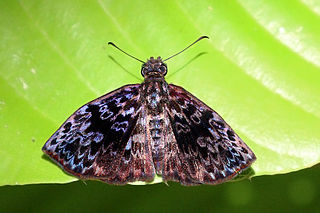
Cycloglypha is a genus of skippers in the family Hesperiidae.

Tisias caesena is a butterfly in the family Hesperiidae. It is found in Brazil.

Sciocorini is a tribe of stink bugs in the family Pentatomidae.
















